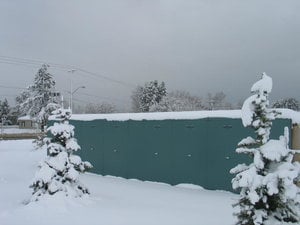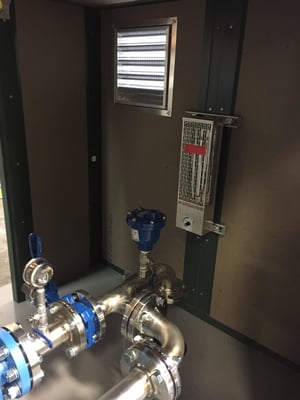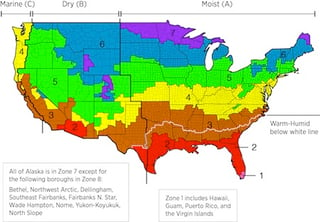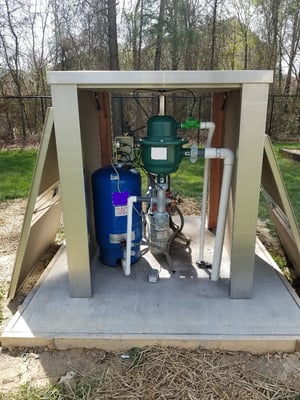When we discuss enclosure design, we understandably talk at length about the importance of keeping pumps, valves, wellheads and backflow equipment thawed and able to function regardless of the conditions outside. There’s more to weigh out, though, when it comes to making the right enclosure choice for your use case. What other considerations are there beyond freezing?
Weatherization and winterization processes are more than just keeping track of the temperature. And our enclosures are able to protect more than just the water supply. What about maintaining oil viscosities? Or ensuring your enclosure is able to handle loads of snow? Or knowing which heating option works best for your situation?
Engineers considering a pump enclosure design should keep these five guidelines in mind:
- Size
- Heater
- Min & max temp
- Snow & wind load
- Ease of maintenance access
Some of these are more obvious than others, but there’s a reason the most experienced pilots use checklists: it’s too easy to gloss over key details.
Optimal size

It may sound silly, but the Goldilocks principle of design should always be your north star: not too big, not too small, but just the right size.
Heating excess space is inefficient and oversizing your enclosure drives up operating costs and will require a heavier duty heater than you may actually need. At the same time, an undersized enclosure may leave equipment too close to exterior walls or leave portions of the slab exposed, allowing heat to dissipate.
Use the right heater
 The right enclosure heater is a function of both size and design. Calculate the required wattage based on a number of factors including anticipated outside temperatures, target ambient temperature inside, enclosure size and any heat your equipment will generate in operation.
The right enclosure heater is a function of both size and design. Calculate the required wattage based on a number of factors including anticipated outside temperatures, target ambient temperature inside, enclosure size and any heat your equipment will generate in operation.
Enclosure design should also consider the consequence or potential cost of a failure. Consider redundancy countermeasures such as remote alerts in case of failure. In most cases, it’s best to focus on heating the slab.
In many installations, water is the primary concern, and often, environments are prone to moisture. A heater designed for wet/damp environments is preferable, even when the equipment being protected isn't a conventional water valve or water pump.
Be realistic about the temperature parameters
 The main factor to consider with winterizing a pump or valve is how cold it will get outside, for how long, with how much insulating snow cover, and so on. Factor in the lowest acceptable ambient temperature for your equipment. Again, if the threshold is keeping water from freezing, that will likely be a different marker than what’s needed to keep oil flowing or to maintain other processes.
The main factor to consider with winterizing a pump or valve is how cold it will get outside, for how long, with how much insulating snow cover, and so on. Factor in the lowest acceptable ambient temperature for your equipment. Again, if the threshold is keeping water from freezing, that will likely be a different marker than what’s needed to keep oil flowing or to maintain other processes.
Plan for snow and wind
Aside from skiers, we're guessing that most people are hoping for calmer winters with less snowfall. Your enclosure design can’t be drawn based on your hopes, it has to plan for worst case scenarios: Arctic cold from polar vortexes, heavy snowfall, wind and ice and compacted snow. Structural demands on your pump enclosure have to consider more than just temperature-based winterization.
Generally, the ASSE 1060 standard is a helpful guideline. While it focuses on backflow preventer valve enclosures, it's a reasonable planning tool for pump skid enclosures or shelters for a wide variety of equipment, addressing snow and wind load requirements.
Maintenance access
 What happens when, not if, something goes wrong? Over time, failure of pumps is inevitable. When you plan for pump enclosure winterization, it's often either for remote locations or demanding industrial environments.
What happens when, not if, something goes wrong? Over time, failure of pumps is inevitable. When you plan for pump enclosure winterization, it's often either for remote locations or demanding industrial environments.
Plan for that eventuality. When the remote temperature alarm goes off, or the equipment itself alerts a failure, your team still has to be able to quickly resolve the issue, even when the conditions are harsh. Murphy’s law, and so on.
Make that access as simple as possible by designing for appropriate maintenance access. Position panels for direct access and provide roof access to hoist equipment out if required.
Designed around your application - not vice versa
The right enclosure design often requires more than just the blanket wrap solution or a standard stock enclosure. Knowing the right questions to ask can substantially simplify an engineer's job. Our enclosure engineers are here to help you, just as we've helped thousands of others trying to design the right enclosure for their needs.
image - cob industries




